Connecticut might not be the biggest state in the US, but it’s got an enviable fishing potential. The Constitution State’s angling scene has been getting more popular in the past few years, and it’s hardly a surprise. Both freshwater and saltwater fishing in Connecticut is only getting better as time goes by.

The key to this constant improvement is the attention local fisheries have been getting, especially when it comes to stocking and preservation. This allows for quality fish to thrive in Connecticut. The action has been on fire in freshwater watersheds as well as in saltwater – all over Long Island Sound and beyond. If you’ve never fished in Connecticut before, we’ll help you figure out what you can target, when, and where.
What fish can you catch in Connecticut?
This is the third smallest state in the country, yet its fishing diversity is impressive. Let’s talk about some of the freshwater and saltwater species you can look forward to at the end of your line.
Saltwater Fishing in Connecticut
If you’re craving excellent saltwater fishing, then the Long Island Sound is your destination. There are dozens of species you can target, but there are a few that everyone wants. Let’s see who they are.
Striped Bass

Stripers are easily among the most loved fish in the state, probably because there are so many of them. They normally prefer saltwater but are known to head to freshwater when it’s time for spawning. That’s why you’ll have the most success fishing rivers in spring and early fall. For the rest of the year, you can look for Striped Bass around saltwater estuaries and shallow reefs.
These fish can grow anywhere from 2 to over 20 pounds, and they’re always hungry. Tempt them with their favorite live bait – herring, alewives, and manhaden, or use crankbait, soft plastics, and topwater plugs. A lot of Stripers hunt in shallow waters, so light tackle gear is the way to go, even though the fish can get pretty big.
Black Seabass
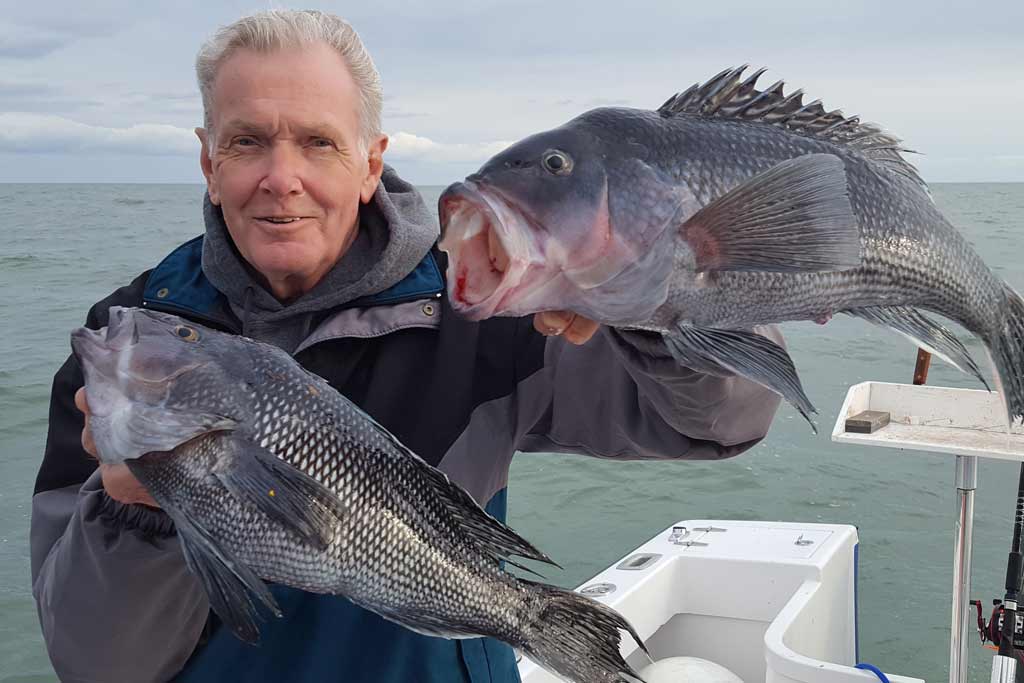
Black Seabass are on the rise in the Long Island Sound. There are more and more juvenile fish every year, which is great news for recreational fishermen. Seabass have become a popular catch on charter trips, simply because they’re abundant and delicious, which is a combo everyone wants. They’re available all year, but the bite is at its best in the summer and fall.
You’ll find Black Seabass in Connecticut’s inshore waters, though they’re known to go further out in pursuit of food. Bottom fishing around rocks, jetties, and reefs is productive, especially if you use mussels, conch, or clams as live bait. Jigging with soft plastics can also put you on the bite. Basically, you can’t go wrong when targeting Black Seabass!
Fluke (aka Winter Flounder)
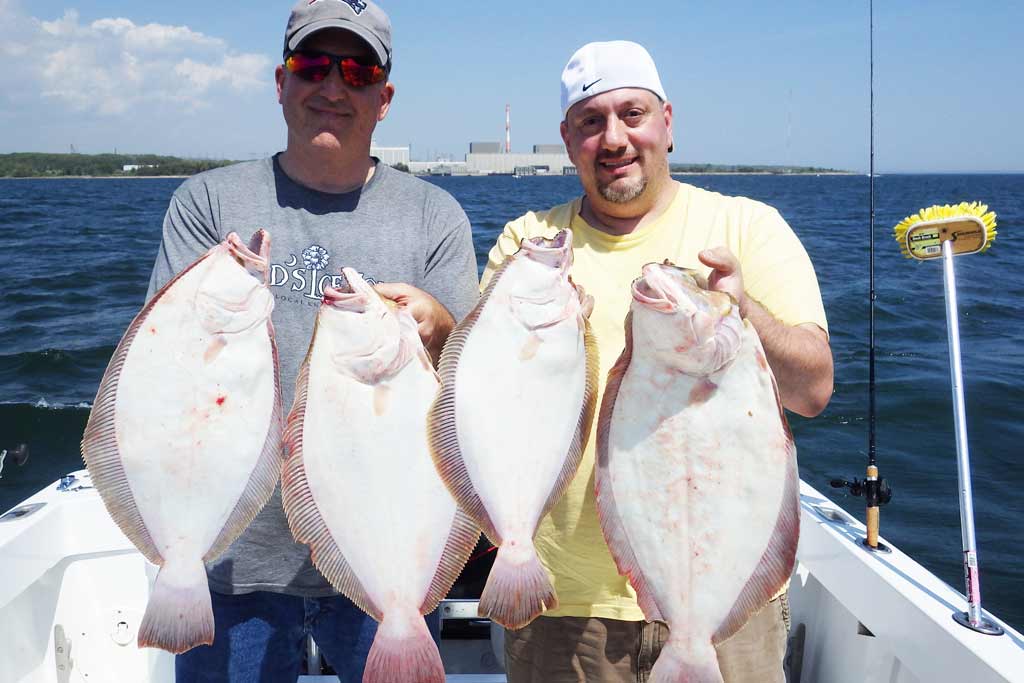
Another bottom dweller that’s a lot of fun to catch is Fluke. Also known as Winter Flounder, these flatties usually weigh from 2–6 pounds, though there are bigger ones out there. The best time to catch yourself a Fluke is in late spring and summer. They like calm waters and muddy bottoms of estuaries where they can camouflage and wait for their prey to swim by.
Fluke are ambush predators through and through, and this gives you a hint on how to present your bait. Nothing beats live bait when you’ve got Fluke on your mind – mummichogs, grass shrimp, and bunkers work nicely. You’ll find them in nearshore waters, and it’s important to bring your offering close to them so that they can easily snatch it.
Tautog (aka Blackfish)

The saltwater fishing scene in Connecticut is dominated by one fish that might not be a looker, but it does have other appealing attributes. We’re talking about Tautog, commonly known as Blackfish. There’s no species that fights as fiercely as ‘Togs, which makes them a really good catch. These fellas spend the coldest parts of the year offshore and then come close to shore when temperatures rise. Fall is the prime time to target Tautog.
In spring and summer, Blackfish hunt around rocks and jetties close to land, so you can get one from shore. In the fall, you’ll need a boat to get to them, but when you do, be ready to fight. Green crabs are the most productive bait, but even when you hook them, Tautog are strong and smart – they’ll try to cut your line on underwater structure. You’ll need a sturdy fluorocarbon leader to make sure this doesn’t happen.
Scup (aka Porgy)
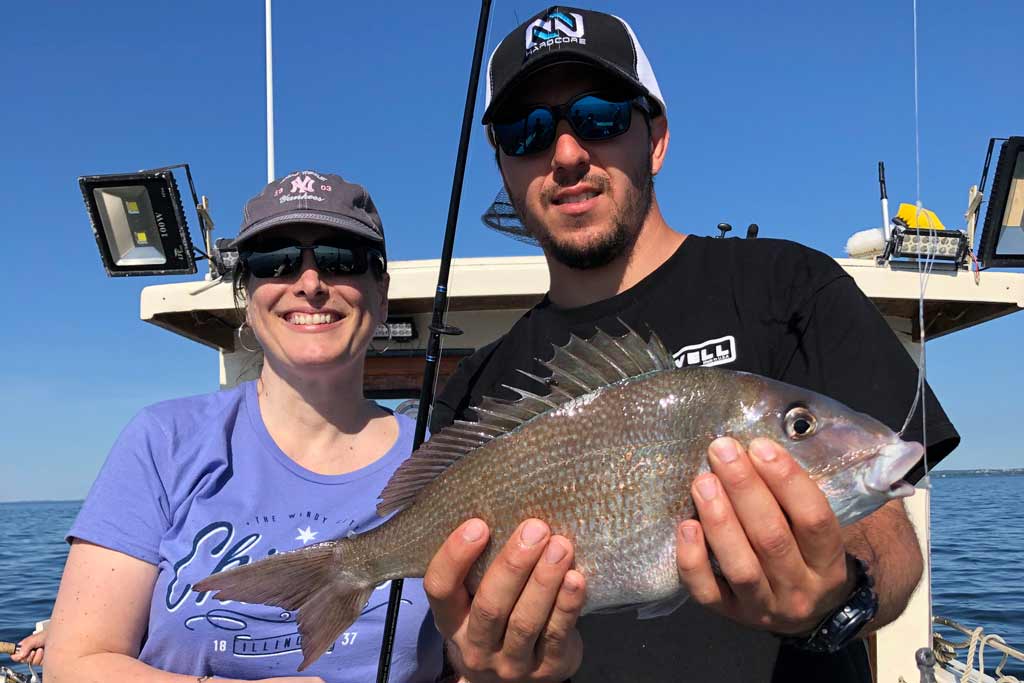
As you might have guessed by now, Connecticut bottom fishing is off the charts. Along with all the fish we’ve already mentioned, Scup is another fish on everyone’s to-catch list. Scup aren’t very big and they usually weigh 1–4 pounds, but they make for delectable table fare. They’re around from April–November, after which they travel offshore for the winter.
One of the great things about Porgy fishing in Connecticut is that it’s great for beginners and kids. They congregate around oyster beds, jetties, rock piles, and bays, usually in waters up to 100 feet deep. They’ll gladly take your offering if you’re using sandworms, squid strips, and shrimp, and they’re always hungry, so tempting them to bite shouldn’t be too difficult.
And More…

We can’t talk about Connecticut without mentioning shellfish. Lobster, Blue Crab, Oysters, Scallops, Mussels, and all other kinds of Clams are big here. Lobster and Blue Crab make for the most fabulous eating you can find. You can also go after Little Tunny, Bonito, different Shark species, and, yes, you can even target the majestic Bluefin Tuna in the bluewater.
Freshwater Fishing in Connecticut
If you thought saltwater fishing sounded good in Connecticut, well, it only gets better as you move on to rivers and lakes. All the freshwater superstars are here, including Trout, Bass, Catfish, Walleye, and more. Here’s what you need to know.
Trout
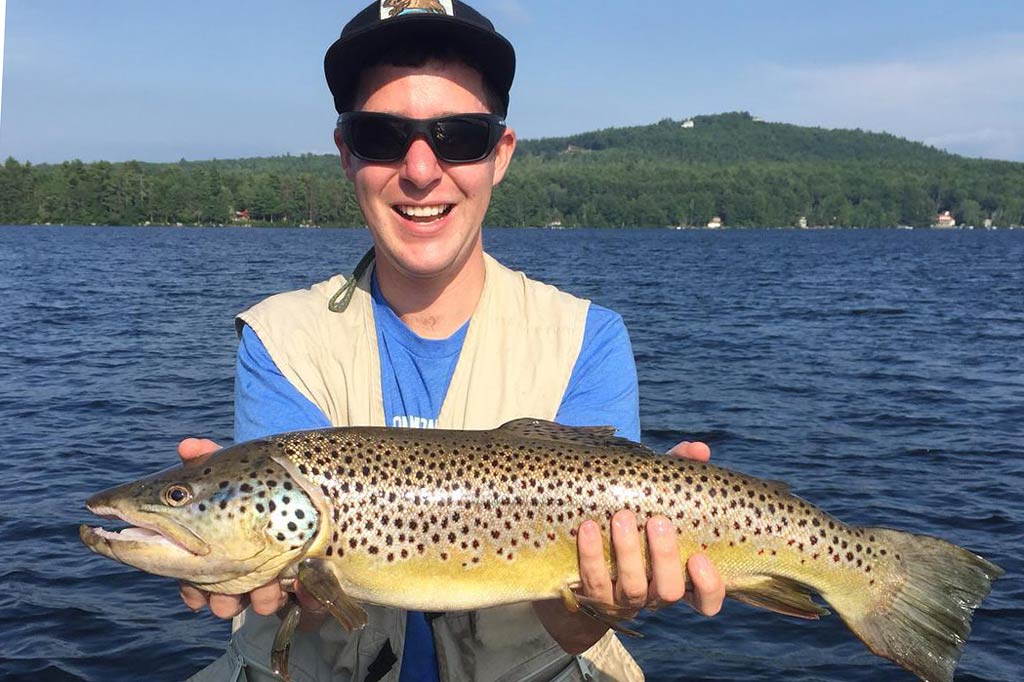
Trout fishing in Connecticut is the pinnacle of freshwater action. Different Trout species are stocked yearly in watersheds all over the state, and there’s a lot to choose from – Rainbow, Brown, Tiger, and Brook Trout are all on the menu. ‘Bows and Browns are the most common catches, and you can target them all year, you just need to pick your locations wisely.
If you’re new to this kind of fishing, then you can start slowly – on one of the many Trout lakes. If you’re up for more of a challenge, head to the Salmon or Connecticut Rivers – fly fishing is excellent here. Bear in mind that getting a Trout to bite isn’t easy, because these fish are fickle and very smart. Make sure you use light tackle, small hooks, and lures. If you’re using live bait, we’d recommend worms and shiners.
Largemouth and Smallmouth Bass
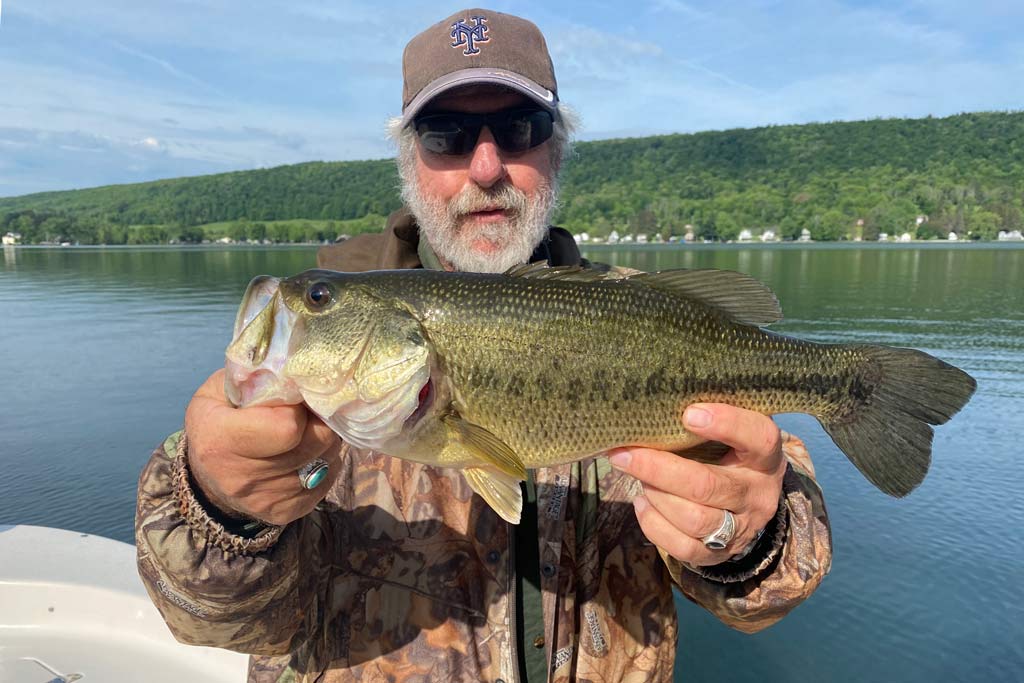
Yes, Trout are popular, but Bass give them a run for their money. Definitely one of the state’s most beloved freshwater fish, Largemouth Bass are on everyone’s mind from late spring until late fall. Depending on the time of year, you can find Bass around any type of structure that allows them to hide and ambush their prey.
During the summer, you’ll want to present your offering in deeper waters, where Bass hide from the heat. Similarly to Trout, there are Bass Management Lakes all over the state, where you can land lunker Bass. But any fish under 12 inches and over 16 inches is strictly catch-and-release. This means you can get a specimen that weighs anywhere between 2–8 eight pounds. Get your bass to bite with spinnerbaits, crankbaits, and worms.
And more…
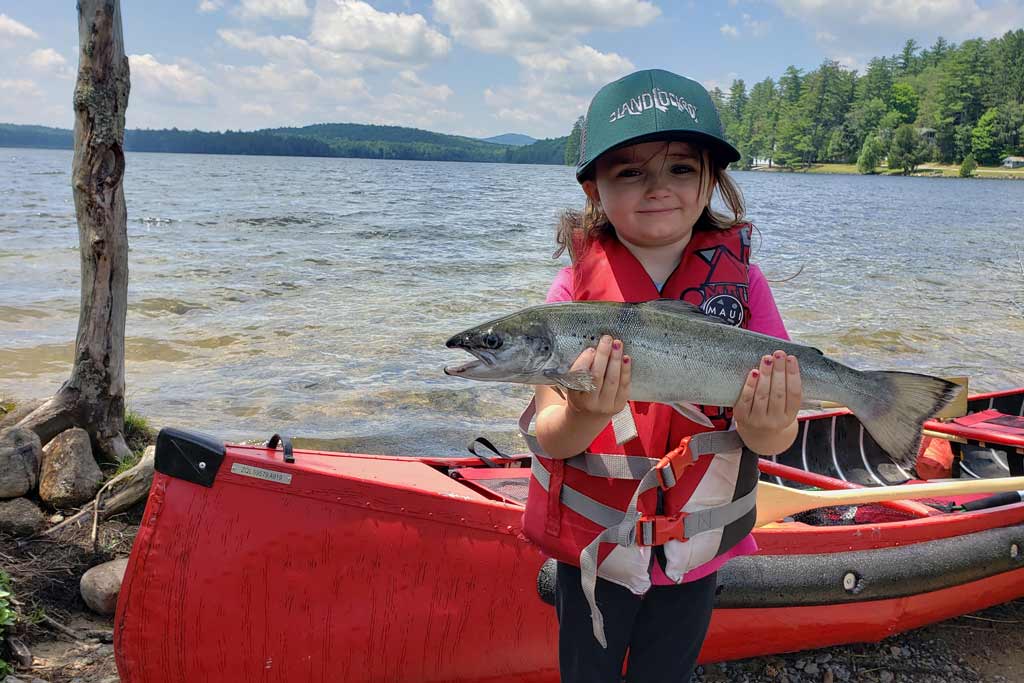
The main reason freshwater fishing in Connecticut is such a big deal is the variety of fish. While Trout and Bass take the most prominent spots, there are many other species that deserve your attention.
Atlantic Salmon comes to mind because the bite is excellent and you can target it only in two watersheds – the Shetucket and Naugatuck Rivers. Kokanee, the landlocked Sockeye Salmon, is another favorite of local anglers, especially in East Twin Lake and West Hill Pond. Both fisheries are regulated and managed by the state in order to keep them thriving.
Then you’ve got Catfish, Walleye, Carp, Northern Pike, Panfish of all sizes, and the list goes on. As you can see, there’s a lot to target all over Connecticut, it’s only a matter of choosing where you’d like to start.
How to Go Fishing in Connecticut
Now’s the time to talk about how to catch all the awesome fish we talked about. There are different approaches you can take on – here are a few that are most productive.
Fishing from Shore
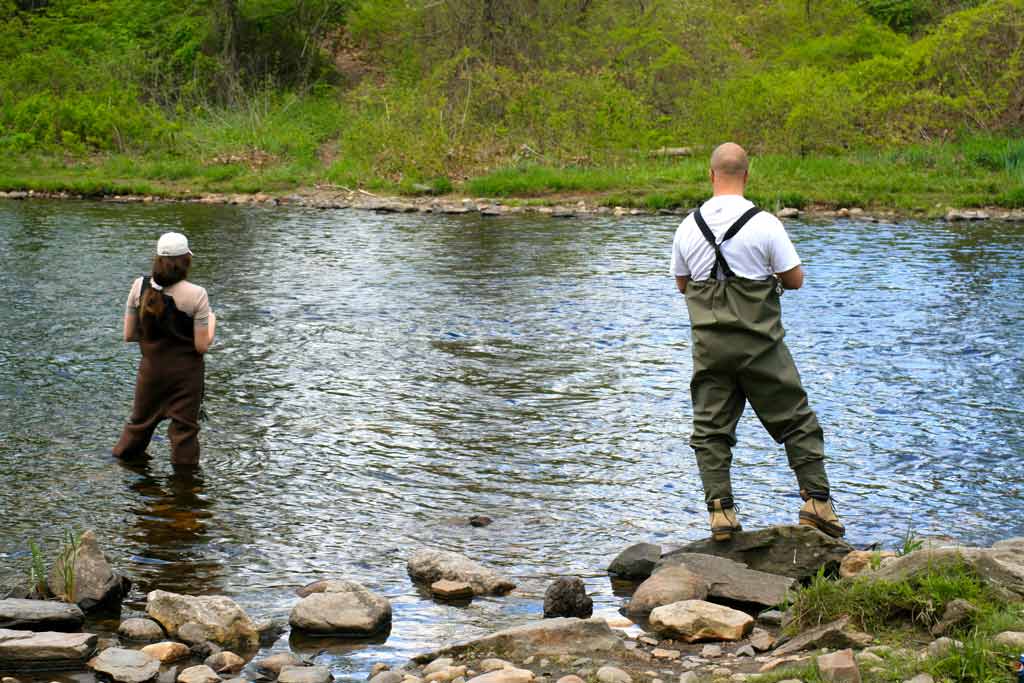
Saltwater fishermen in Connecticut have it good – this section of Long Island Sound boasts easy access to fisheries from coastal state parks. From there, you can try your hand at catching any and all the species we mentioned earlier. From spring to late fall, these parks are teeming with good fish and anglers eager to catch them. Night fishing can be amazing as well.
Freshwater opportunities are just as good, especially because of the Community Fishing Waters. This program allows everyone to get into fishing, and the 16 lakes covered in the program are dotted all over the state. Trout and Catfish are stocked in these lakes every year. Basically, all you need is waiting for you – you just need to get started.
Fly Fishing in Connecticut
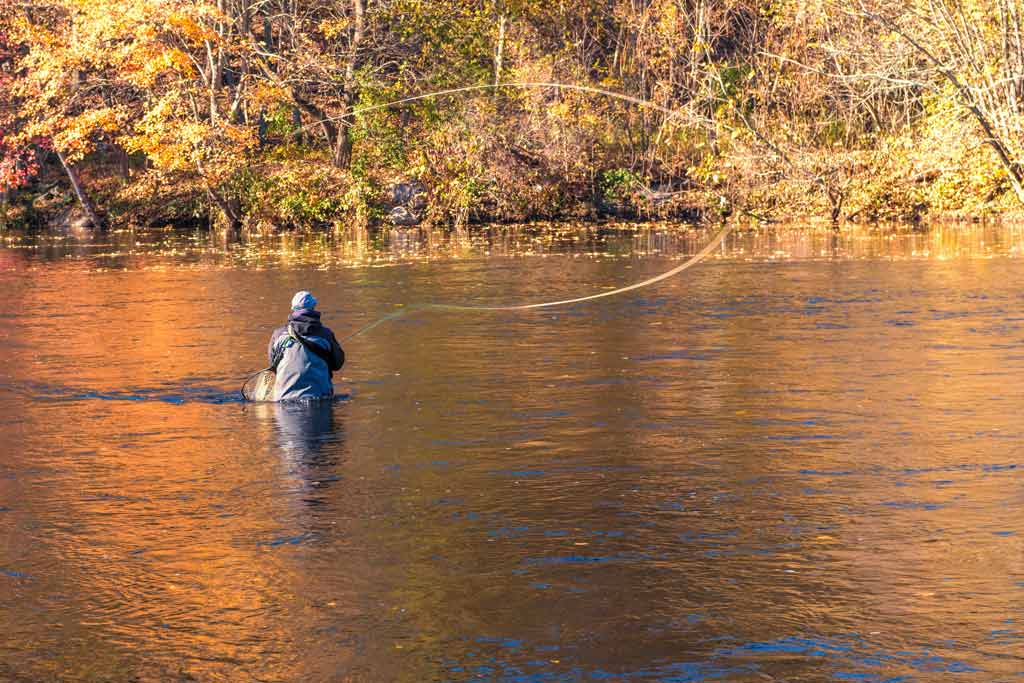
When you’ve got freshwater fishing that’s this good, you know fly fishing is going to be off the hook, too. Don’t get us wrong, you’re welcome to cast your fly in the sound as well, but it’s the rivers and streams where you’ll find the best bite.
Hot spots like Farmington, Naugatuck, Housatonic, and Pomperaug Rivers are the fly fishing epicenters for all levels of fly fishing. Trout is the name of the game, especially Rainbows and Browns. You can also get your hands on Atlantic Salmon, which are more finicky by nature, but lots of fun to catch. There’s a wide variety of flies you can use on these watersheds, the best choices being stoneflies, caddis, and other streamers and dry flies.
Fishing with a Charter
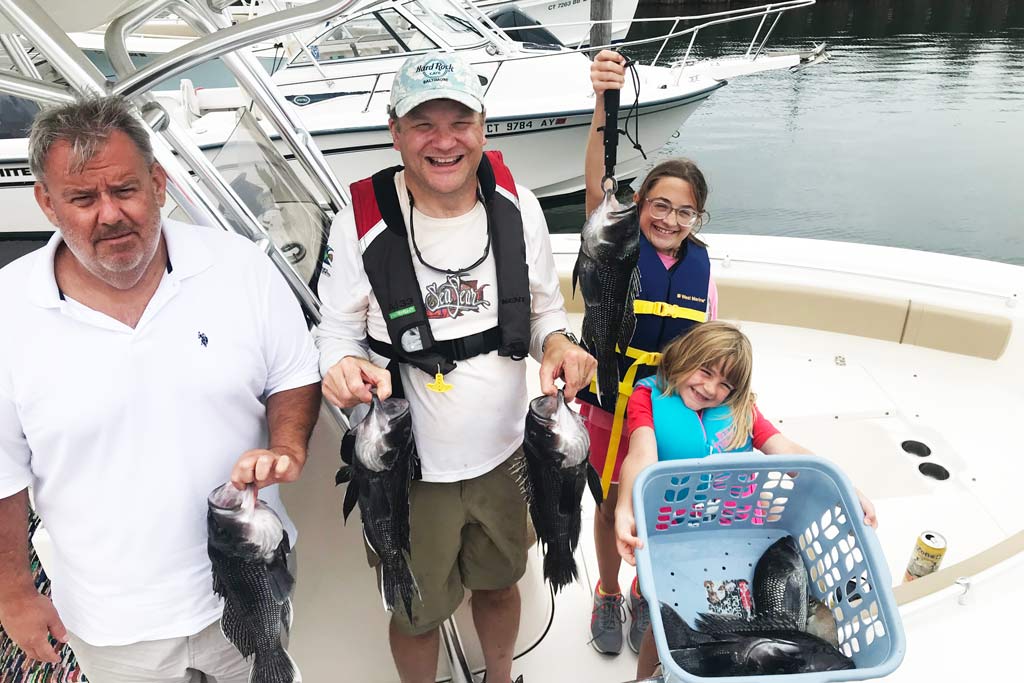
Even though it’s a relatively small state, Connecticut has a good number of professional fishing guides. With boat landings on many lakes and rivers, you can easily find a charter that will take you to your fish.
Things are even better when it comes to saltwater fishing charters in Connecticut – coastal cities like Stamford, Old Lyme, and Norwalk have plenty of crews to choose from. You can easily book a 3 hour excursion just to check out the local fishery or you can go on a full day trip, where you’ll target a variety of species. Your captain will lead the way to the best spots, share their local insight, and often clean and fillet the catch for your convenience.
Where can I go fishing in Connecticut?
We’ve already spoken about some of the most prolific fishing spots in Connecticut, so let’s take a closer look at where you can go to earn your bragging rights.
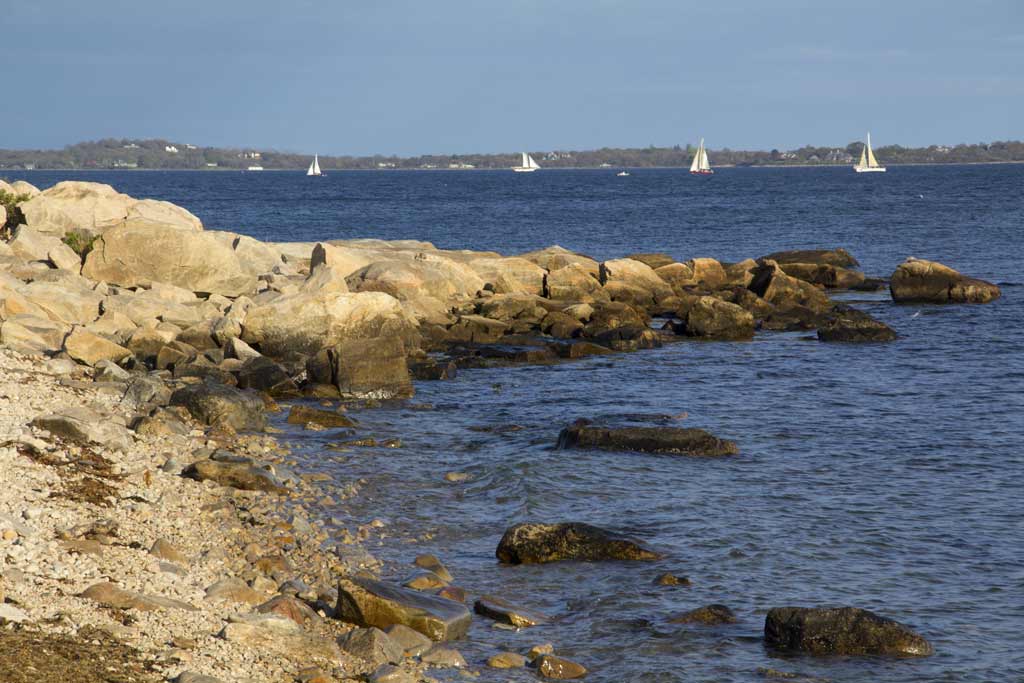
- Long Island Sound: It’s hardly a surprise that the sound comes first on our list. In its rich waters, you’ll find Stripers, Fluke, Black Seabass, Tautog, Scup, and more. You’ve got over 300 miles to explore, so you’d better get cracking!
- Fishers Island: Even though it’s officially a part of New York state, locals love fishing around Fishers Island. That’s because the bite can be fantastic, with Bluefish, Striped Bass, Flounder, and Black Seabass as the most common catches.
- Stamford: If you prefer urban fisheries with both freshwater and saltwater opportunities, you’ve come to the right place. Fish the sound for Stripers and Scup, or go inland in search of Trout, Largemouth Bass, and Catfish.
- Connecticut River: This is probably the most popular river in the state, also running through Massachusetts, New Hampshire, and Vermont. The river runs into the ocean and is tidal for about 60 miles, which is perfect for some big Striped Bass.
- Salmon River: Given its name, it’s not hard to guess that Atlantic Salmon is one of the top targets, here. Trout comes in as a close second – Rainbow, Brown, and Brook Trout to be exact. Fly fishing on the Salmon River is one of the best ways to get yourself a beauty on the line.
- Candlewood Lake: This is one of the top Bass fishing lakes in the state. Largemouth and Smallmouth Bass are on the menu, and both quantity and quality are remarkable.
Connecticut Fishing Regulations
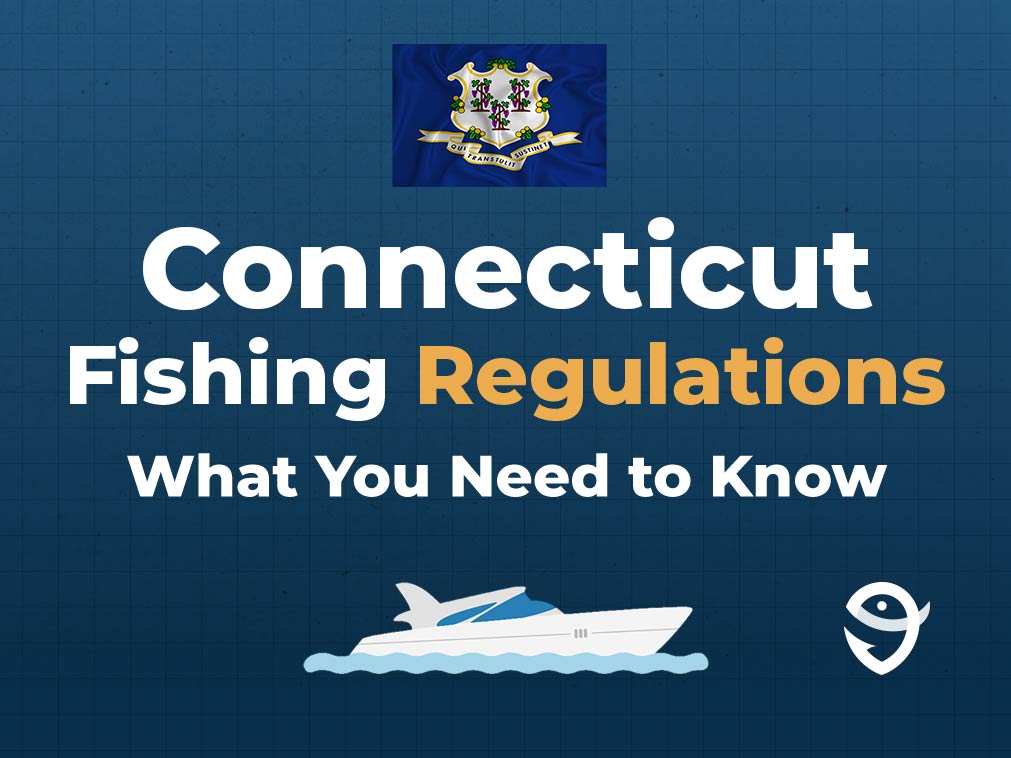
If you’re coming to Connecticut to explore its fishing potential, the first thing on your to-do list is to get a fishing license. Everyone who is 16 and older needs to choose a valid license from the given options, and the prices will differ for residents and non-residents.
Freshwater anglers will also need a Trout and Salmon stamp if the plan is to fish for these species. If you’re going out with a charter, though, you don’t need to worry about licenses – your guide will cover them for you. Bear in mind that some bodies of water have special regulations, so be sure to do your research before you head out.
Fishing in Connecticut – Small State, Big Fishery
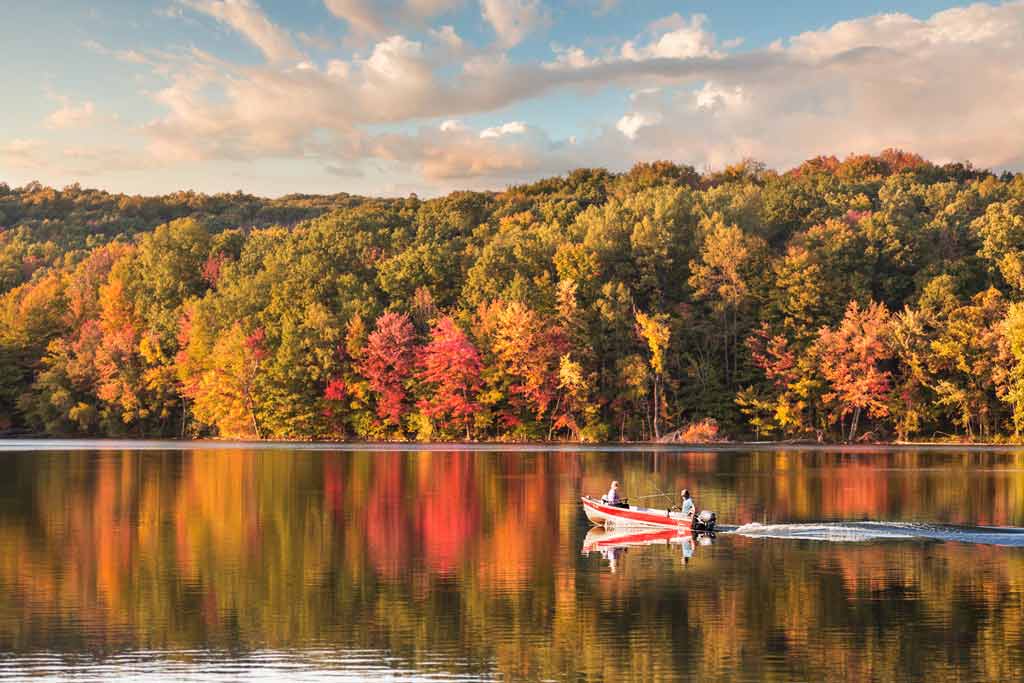
The Constitution State is yet to take on the fishing world by storm, but they’re working hard at it. With all the stocking programs and efforts to bring fishing to the wider public, it’s only a matter of time before everyone figures out just how good fishing in Connecticut can be. Why not experience this hidden gem of a fishery before the crowds rush in?
Have you ever been fishing in Connecticut? Did you catch something good? Do you have any stories and tips to share? Did we miss something? Let us know in the comments.
The post Fishing in Connecticut: The Complete Guide appeared first on FishingBooker Blog.
https://ift.tt/tZ5Di73
0 Comments
Enregistrer un commentaire